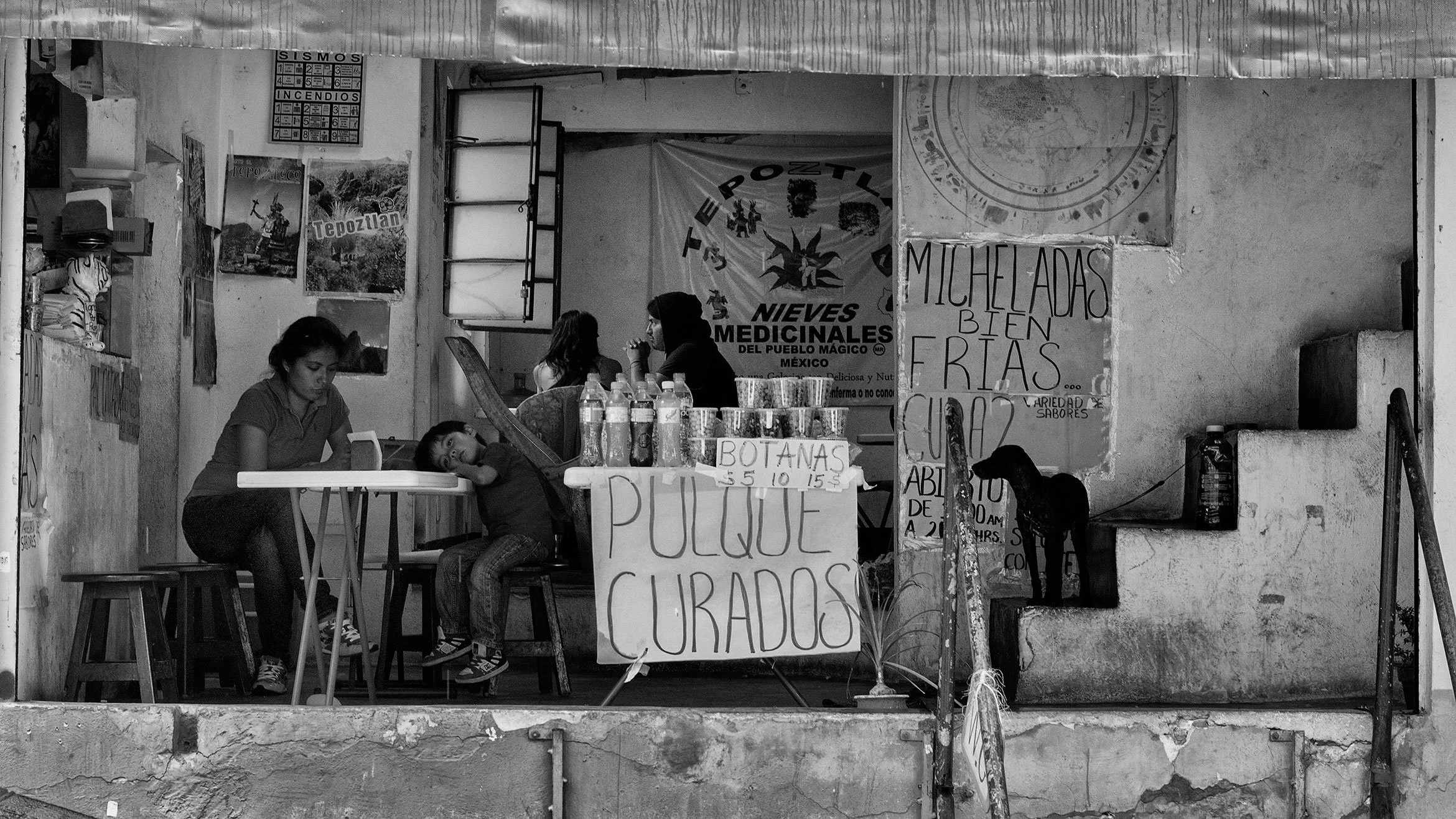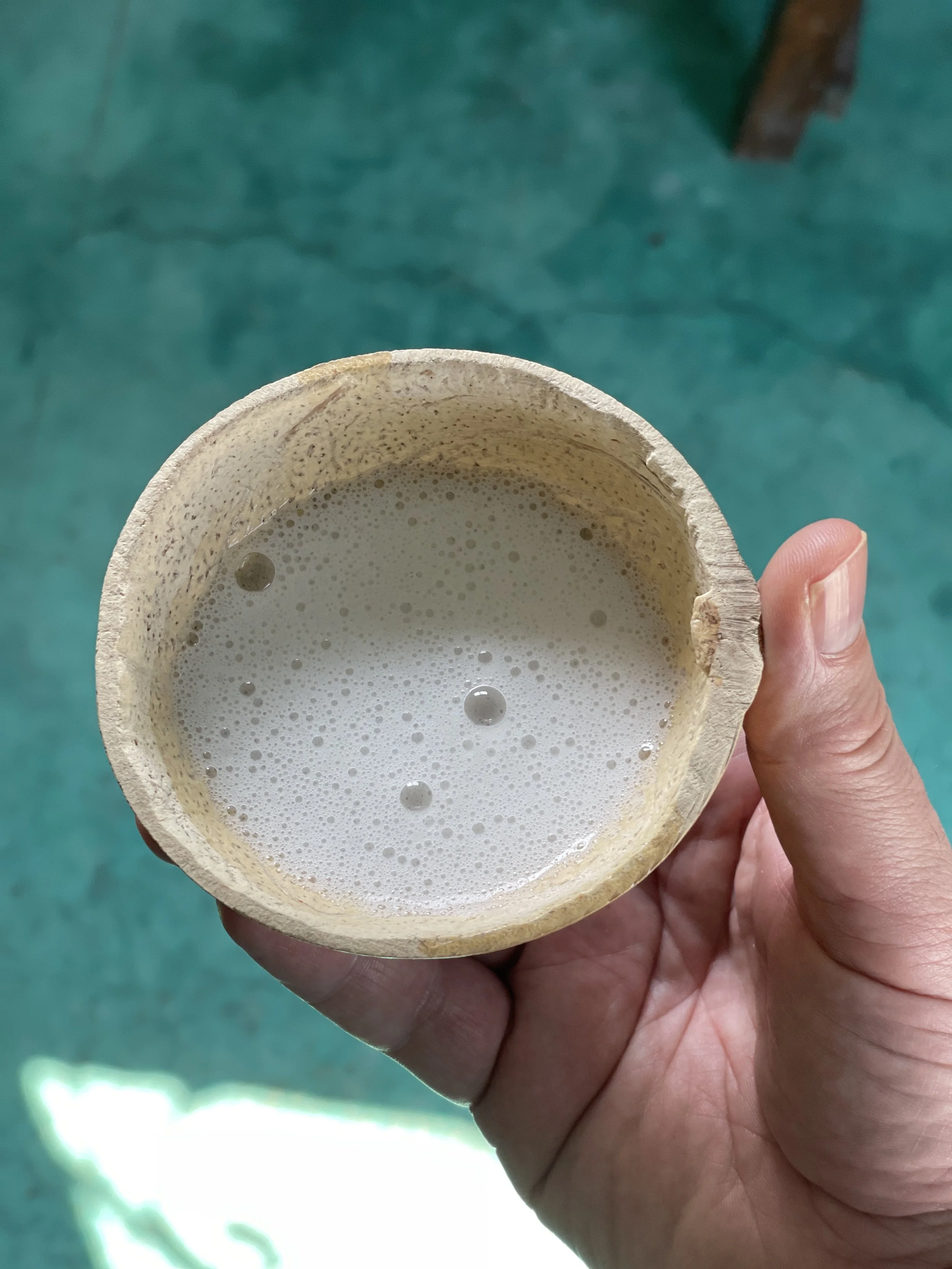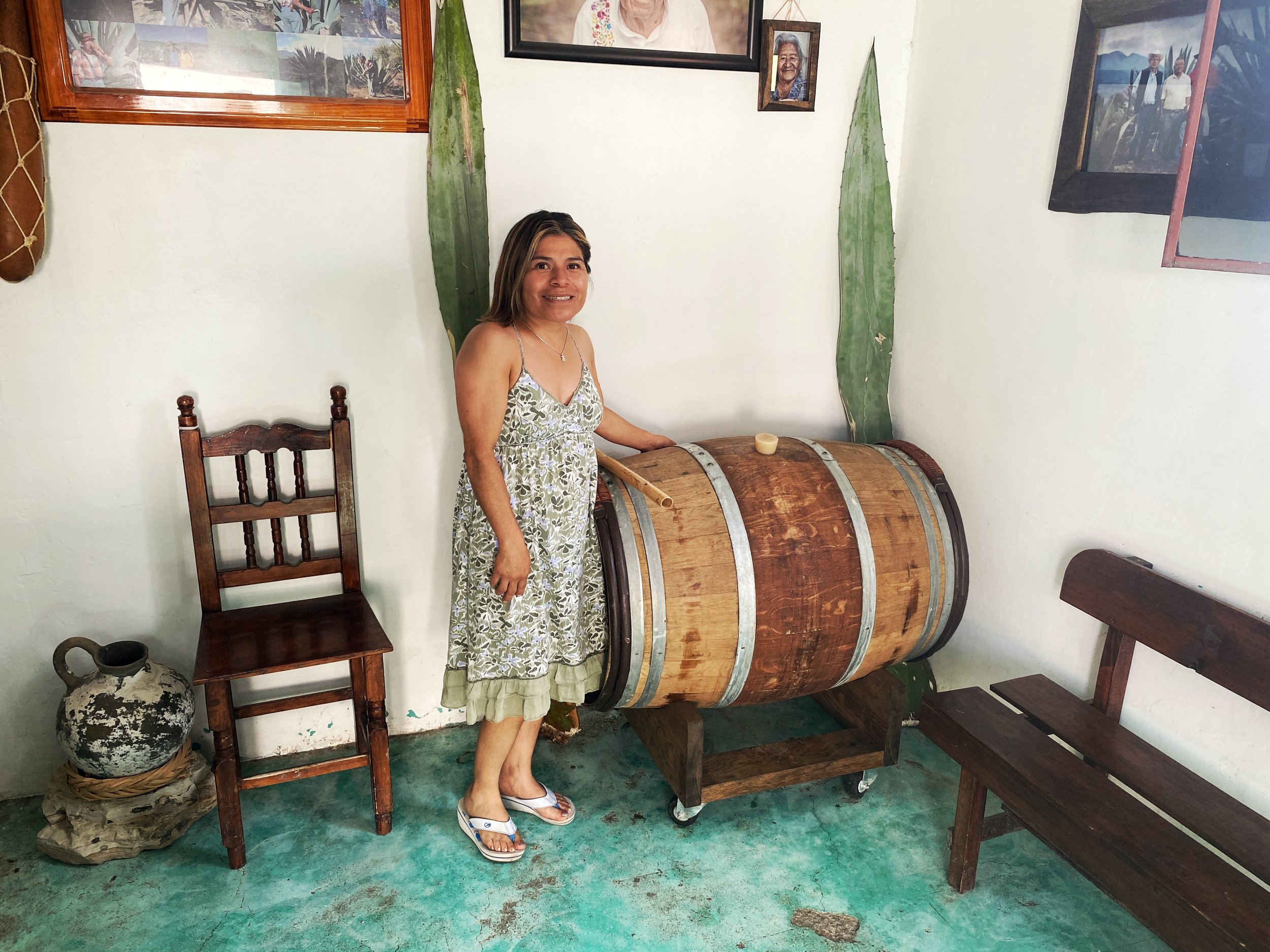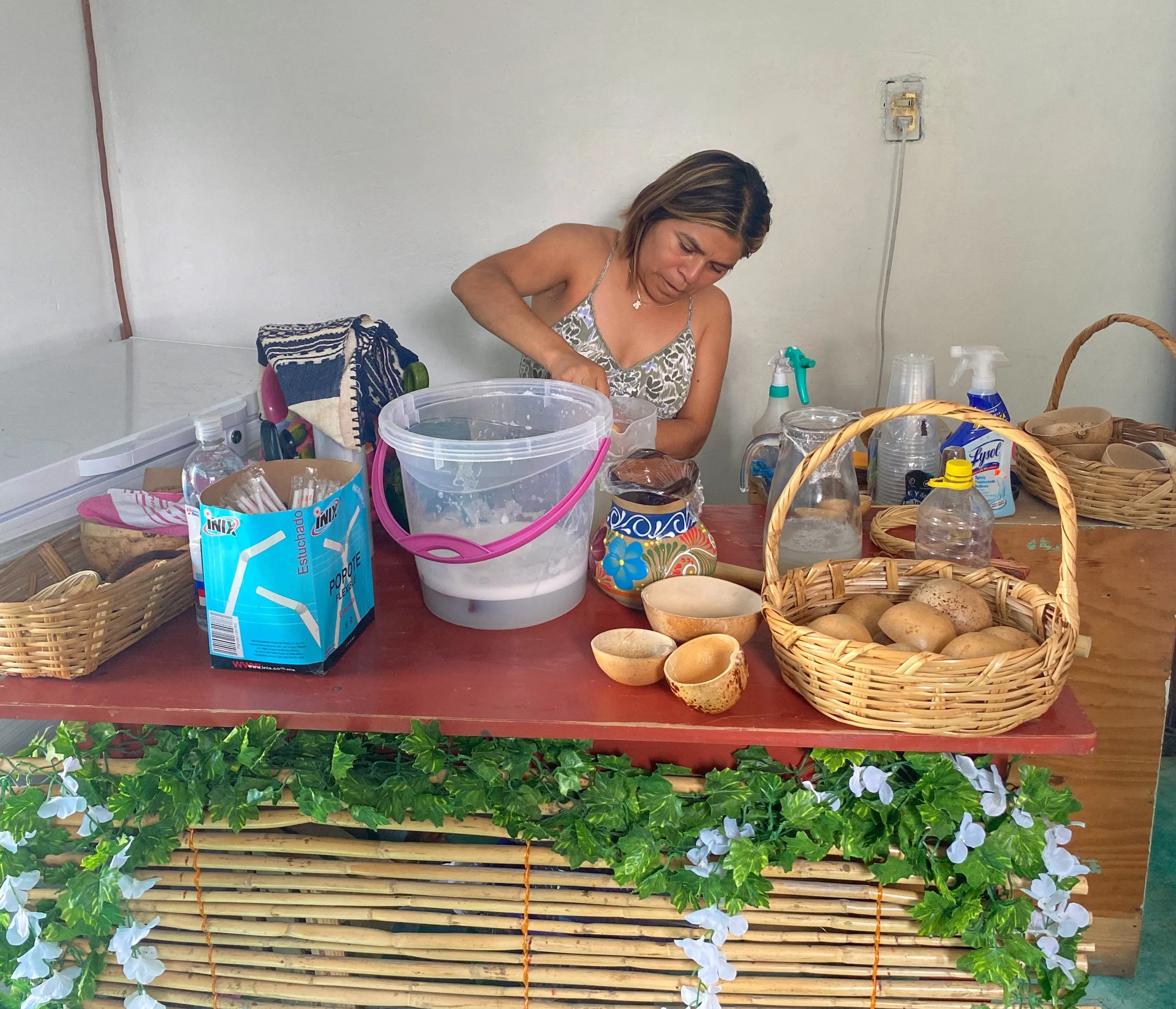Pulque de maguey is harvested from agave and was the drink of the Aztec gods. Just be sure to go to the source — the phlegmy beverage you get in city pulquerías can be downright foul.
Pulque is a popular drink in Mexico made from naturally fermented agave sap.
Duke and I had heard of pulque charmingly described by our friends Juls and Hugo as a beverage having the consistency of something in-between saliva and jizz. And, sadly, that was not an exaggeration.
Despite this less-than-glowing recommendation, I still felt like I had to try this mysterious concoction on our first visit to Mexico City.
“Pulque is charmingly described as having the consistency of something in-between saliva and jizz.
Sadly, that’s not an exaggeration.”
What we didn’t understand at the time is that pulque is so highly fermented that it doesn’t travel well — unless other elements are added to it. So the pulque you get outside of the villages where maguey agave is harvested are what’s called curado, or cured.
“If you tried pulque in Mexico City, it was probably thick, kind of gooey stuff,” said Alvin Starkman, our mezcal tour guide. “If so, it was adulterated — but not necessarily bad.” (We beg to differ.)
Cheers! When you’re in Mexico (like these fellows back in 1910), give pulque a try — especially if you’re in an area where agave grows.
Various items are added — milk, cream, sugar, cornstarch, fruit, even oatmeal — to slow fermentation. Because if you take a container of pulque without releasing air constantly, it’ll literally explode. Alvin bought some pulque to take home, and he had to keep unscrewing the lid of the gallon container, which would overflow from the pressure.
A shop selling pulque curado — which has fruit juice and other ingredients added to it so it doesn’t literally explode.
But curado isn’t genuine pulque. We were lucky enough to try some on our tour of palenques (mezcal distilleries) with Alvin.
Turns out true pulque isn’t phlegmy like its CDMX counterpart. The closest drink I can think of that it resembles is kombucha — slightly sweet, acidic and fizzy. In fact, like kombucha, it’s loaded with probiotics and is a teensy bit alcoholic, able to give you about the same buzz as a light beer.
The sap of the agave is called aguamiel (literally “honey water”), and that really only lasts one day. We were able to try some that had been gathered that very morning.
If you can try some aguamiel, do so! You have to drink it the same day it’s harvested since the drink ferments so fast.
Pulque’s consumption dates to pre-Hispanic times, when it was considered a sacred drink reserved for the gods, priests and emperors. During the colonial era, the Spanish tried to ban the beverage, considering it immoral. In fact, it’s said that it was so popular, on any given day 13% of the population of Mexico would be drunk on pulque. Unable to prohibit its consumption, the Spanish did the next best thing: They taxed the hell out of it.
Pre-Hispanic figurine of a pulque maker, dating from 100 BCE to 300 CE
How Is Pulque Made?
There are five or so species of agave in Mexico, Alvin says, that mature after roughly 15 to 20 years of growth. Just before the stalk shoots up from the center of the massive plant, someone called a tlachiquero goes into the field and carves a hole in the middle, right where the stalk would sprout. The liquid called aguamiel starts to seep into the hole.
“The nutrients go from the leaves into that hole in the middle of the plant in the form of a sweet liquid,” Alvin explains.
The minute aguamiel is taken from the “well,” it interacts with the bacteria in the environment and starts to ferment. Fermented aguamiel is called pulque.
“It’s that simple,” Alvin says. Unlike the complex process to make mezcal, “there’s no baking, there’s no crushing, there’s no distilling. It’s a natural process.”
Maguey plants, the type of agave used to harvest aguamiel, which ferments into pulque
Aguamiel is usually harvested twice a day. Before dawn, the tlachiquero will collect the liquid from each plant and then use a tool called a respador to scrape off a layer in the well. “That will open up the pores and help to induce more seepage,” Alvin tells us. “Because they’re going to come back in 10 or 12 hours and do the same thing,” just before dusk.
Then the tlachiquero will put an agave leaf, piece of wood or stone on top of the hole to prevent insects (or larger critters, like possums) from getting at this sweet nectar of the gods.
The process continues for two to five months. “At qpeak production, after approximately a month,” you’re able to get 3 or 4 liters of honey water twice a day from a plant,” Alvin says.
How much aguamiel does one plant yield?
“It’s sort of like a bell curve,” Alvin explains. “At the very beginning, you’ll get a couple of ounces, and then the production increases for about a month or month and a half. At peak production, you’re getting 3 or 4 liters, and then it slowly goes down. And after a few months, there’s virtually no honey water coming into the hole and you stop.”
Mayahuel, the Aztec goddess of alcohol and fertility, was said to actually have 400 breasts — each oozing aguamiel.
Tasting the Drink of the Gods
We visited a family who sells pulque for a living. The shop, in the pueblo of Santiago Matatlán, is now run by Reina Cortés Cortés.
When her grandfather was alive, Alvin would go out into the field with him to harvest the aguamiel, and that’s how he learned about pulque production.
Reina Cortés Cortés at her family’s casa de pulque, standing by a barrel where the beverage is aged.
As pulque ferments, it gets more vinegary, so Cortés adds fruit juice to it.
We tried aguamiel harvested that very morning, and it was bright, light and delicious. Then we tried pulque that had fermented very recently, and again, it was tasty, if a bit more tart and fizzy.
The longer you let pulque ferment, the more it adopts a vinegary taste. To counteract this, Reina had added some strawberry juice, giving it a pastel pink coloring. And while I have to say my favorite was the fresh aguamiel, the pulque we had danced along our taste buds most delightfully. No wonder it was once the favored tipple of the Aztec gods and emperors.
And I hardly need to mention how it blows away the hawked-loogie variety of pulque you get served outside of the pueblos. –Wally































